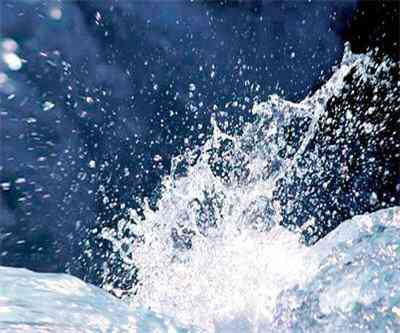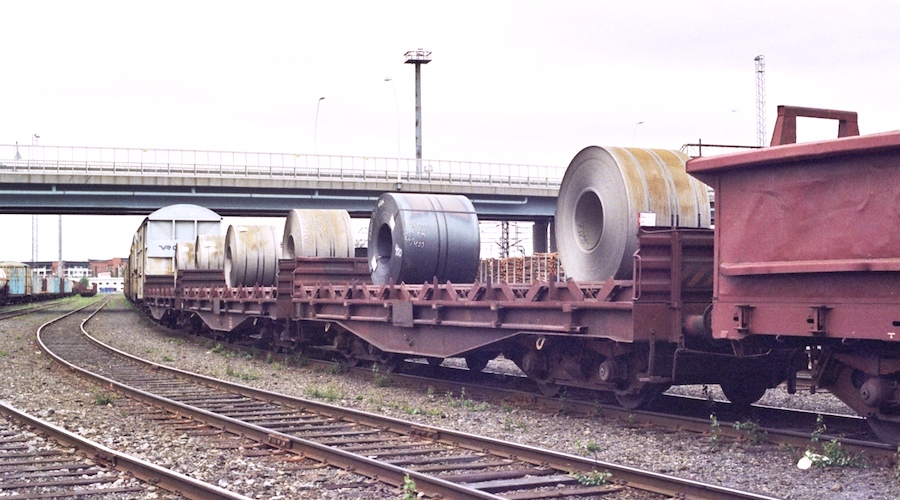Fracking can cause water pollution: EPA

Environmentalists and academics alike welcomed the latest report by the U.S. Environmental Protection Agency (EPA), which confirms a link between hydraulic fracturing for natural gas —or fracking— to groundwater contamination.
In the process of hydrolic fracturing, chemically treated water is forced underground to break rock, which lets gas flow.
The Dec. 8 draft report says there is a proven presence of chemicals consistent with those used in fracking in groundwater samples taken from the Pavillion natural gas field of Wyoming, about 370 kilometres northeast of Salt Lake City.
The EPA’s study comes at a time when the industry is trying to fight fracking’s poor reputation. However, experts such as Anthony Ingraffea, a Cornell University engineering professor, have repeatedly stated that fracking is a threat to drinking-water supplies.
The EPA’s three-year study followed complaints from residents about the smell and taste of their water. Samples taken from an aquifer through deep monitoring wells, near where Canadian natural gas firm Encana Corp. (ECA) has drilled, revealed “compounds likely associated with gas-production practices, including hydraulic fracturing,” according to the draft report.
Encana says that the study does not lead to “a definitive conclusion” and that chemicals such the ones that showed up in the samples are just as possibly “the result of contamination from their own sampling.”
“This precipitous action runs counter to the cooperative approach that Encana and other state, federal and local participants in the Pavillion Working Group took in working alongside the EPA in its investigation for more than three years,” the company said in a statement.
EPA says that the synthetic chemicals associated with fracking as well as high methane levels and benzene concentrations are “well above” Safe Drinking Water Act standards.
The study, the first of its kind to blame fracking for polluting water, also says that Wyoming is much more vulnerable than other areas to water contamination from fracking chemicals because drilling there often takes place much closer to the surface than in other states.
EPA’s draft report on groundwater contamination is available for a 45 day public comment period and a 30 day peer-review process led by a panel of independent scientists. It can be found here.
More News
{{ commodity.name }}
{{ post.title }}
{{ post.date }}




5 Comments
Bhanu Rahoni
Does fracking also pollutes the water (acquifers) which is above by atleast 1000 m or more from the Gas available underground?
geol
That’s a very good question. I read the summary of the EPAs report. Their deep wells were about 250-300 meters deep. They also sampled a number of domestic wells. There are several things other than the fracking that were contributors to the water contamination found. What the EPA found needs a lot of further research to clarify the issues, and I sure hope that they do it.
As far as the environmental effects of deep fracking go, I would quess that unbroken impervious layers above the fracking zone would prevent the migration of the fluids into shallow aquifers. The EPA states though, that they thought that the well casing used in the gas wells was inadaquate. They stated that they thought it was one of the problems contributing to the contamination. More regulation is on the horizon, and I hope that they do a good job of it.
Sreese420
Having been in the Uranium exploration business in the 70’s, out of Grants, NM, we had the same problems with water contamination. Through cooperation with the State of NM and all of the explorers came a set of rules that were and are workable, sensible, economical and cured the problem, absolutely and finally. Bentonite borehole sealing. The initial problem was radioactivity showing up in potable water supplies (wells) between exploration areas and the City of Grants, NM. A set of regulations came about that required borehole sealing using Bentonite both in dry and slurry (wet) application forms. Holes that had been sealed using cement based grouts, neat cements, etc. all, I repeat, all, allowed water to migrate downhole and uphole depending on aquafier pressures. Same problems in Oil/Gas well Frac jobs. Cement provides safety against wellbore overbalance or underbalance pressure problems. Bentonite provides 100% sealing in the presents of fresh water, 100% of the time, absolutly. Problem solved. No need for further ‘studies’ by the EPA, USGS, DOE, XYZ or LMNOP. The process works and will work in Hydrofracing. Problem solved . . . next?
Water Testing
Water excellent is the contamination water systems. Water excellent occurs when pollutants are discharged directly or in a roundabout way into water systems without adequate treatment to remove harmful compounds.
drillin
Just have a look at this Canadian company. As they have a 100% biodegradable, safe for human exposure, Non-Toxic, Non-Regulated Acid(low ph) & Caustic(high ph) replacements(whims, TDG, DOT, EPA & FDA approved), these are the products that are used in fracs. http://www.fluidenergygroup.com